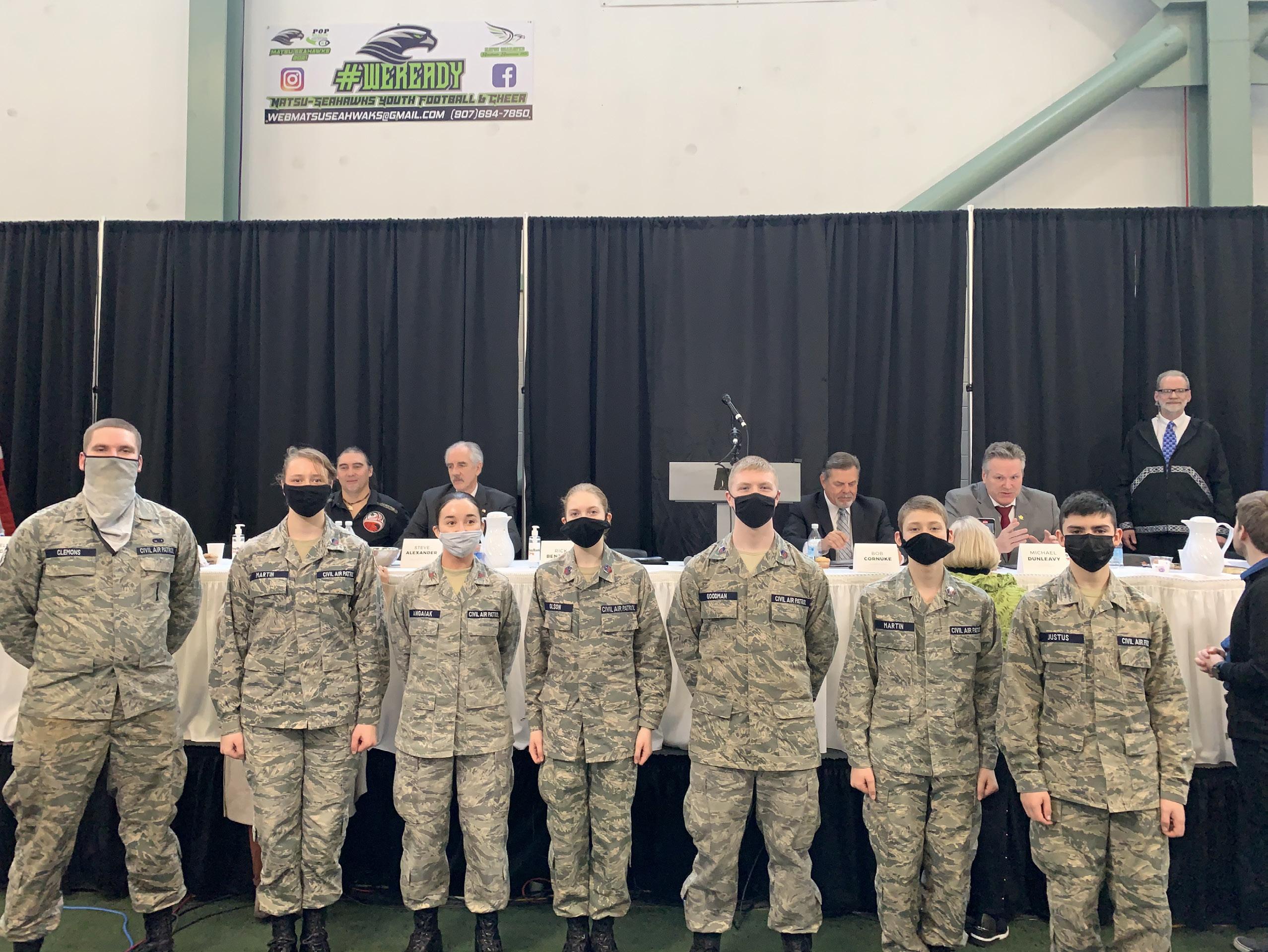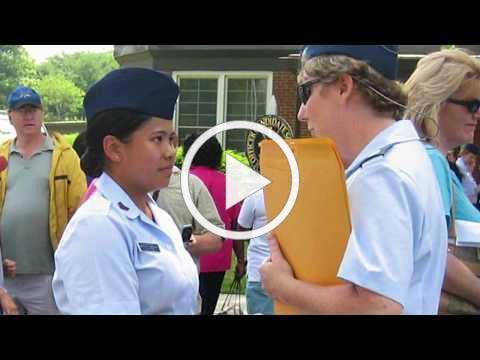
7 minute read
nAtionAl
Operation Pulse Lift began in March 2020 in response to an appeal from the American Red Cross for more blood donation sites. This mission has raised over 2,800 blood units nationwide. Capt Karen Padgett (above) makes a donation to add Alaska to the contributing wings. Pleaase contact Lt Col Stephen Sammons to have your donation recorded if you have not yet done so.
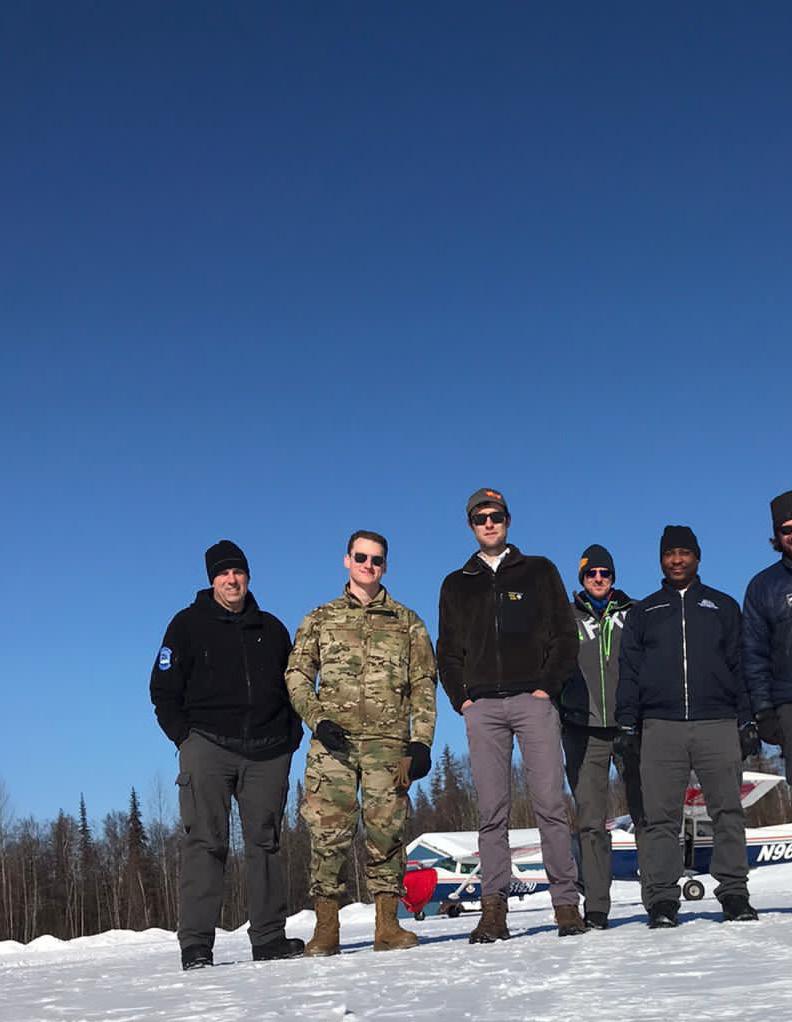

Seven fliers in three aircraft met at Skwentna during the March Sarex. The mission’s objectives included locating a practice distress beacon (DF), establishing air-to-ground VHF communications on CAP frequencies, conducting aerial photography and practicing visual and electronic search patterns on the western side of the MatSu valley. Weather conditions were ideal for all of these objectives. Participating corporate aircraft included a Cessna 172, 182 and 206 turbo.
Left photo: From Left to right: 1st Lt John Drozdowski, SM Jack Minko, SM Corbyn Jahn, 2nd Lt Chris Crago, Capt Larry Jones, 2nd Lt Doug Bourne, Lt Col John Western at the Skwentna airport.
Bottom photo: Aerial view of remote cabins with air strip.
Lima Lima
By Laura Emerson
The Alaska Wing performs many search and rescue (S&R) operations. These emergencies require both practice and coordination among pilots, ground crew members, and communicators. Lectures and simulations are useful, but nothing is better than real experience.
That’s where I help. Although I am not a CAP member (but the wife of one), I frequently receive a call to “put out the beacon.” This means that one of CAP’s experienced check pilots decided to train another flyer to detect and home in on the emergency locator device that we keep at our remote home. Summer or winter, I flip the switch and position the yellow box and antenna on a nearby tree stump, where its signal will not be obscured by our metal roof. Pilots flying north from Anchorage eventually detect the distinctive ringing tone. For the pilot to determine the direction from which the signal is emanating, s/he practices one or more wing nulls, which is a circling maneuver in which the wings will block the transmission from the source location. Most of the time, after flying directly overhead, the pilots give us a wing wag of thanks and then fly back to base. Other times, we mix it up. In the summer, I sometimes take the beacon with me in the kayak and head out to some spot on the lake,


simulating a submerged plane or a floating pilot or emergency bag.
This winter, Lt. Col. Porter suggested that we incorporate ground to air signalling. What a great idea! We considered laying out a blue tarp but because of winds, I decided to try a signalling mirror and a ground indicator made of logs. Because the afternoon was sunny and beautiful enough that a few recreational flyers were in the vicinity, I chose not to use a symbol of emergency, like two parallel lines indicating injury, or an F that says “need food.” Rather, I formed two large L’s out of logs, each one about 12 feet by 7 feet on the frozen surface of the lake in front of our cabin. The CAP pilot, 1st Lt Geoff Oliver, flying at an altitude of 500’ AGL saw both the signal of “Lima Lima” which means that “All is well,” and my random flickers of the signalling mirror, before returning to base from a successful S&R exercise. This signalling practice was as useful to me as it was to CAP. I had to think about the relative positions of the plane, sun and mirror to make use of that tool. I also saw how much the logs sank into soft snow, obscuring a lateral view. It has also been important to note that cold weather degrades the beacon’s battery, rendering the signal weaker. I look forward to future signaling practice for both pilots and me, before either of us needs that skill in a real emergency.
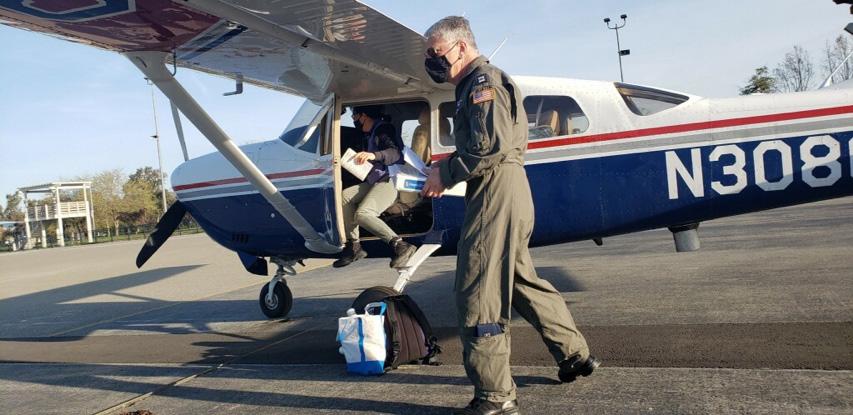
Civil Air Patrol Trains for a Tsunami
Civil Air Patrol Takes to the Skies to exercise their Airborne Public Address System
Location – CONCORD, Calif and SANTA ROSA, Calif.
At 11:00 AM, Wednesday, March 24, 2021 the National Weather Service activated a test of the Civil Air Patrol airborne public address system (APAS) as part of their Tsunami Warning Communications Test. The Civil Air Patrol launched three aircraft over Northern California and our distinctive Red, White, and Blue aircraft provided the broadcasted message to the Northern California Coast of “this is a test of the Civil Air Patrol public address system”. Civil Air Patrol dispatched aircraft and crews from Concord and Santa Rosa to fly the Del Norte, Humboldt, and Mendocino counties coastline with the aerial messaging system. A third aircraft launched from Livermore to act as a command-and-control platform for radio relays between the two broadcasting aircraft and the virtual mission base.
The purpose of this test was to educate residents and visitors along the coast to one of the many ways they may receive warning of an impending tsunami.
According to Mr. Ryan Aylward of the National Weather Service “A tsunami could occur along the California coast caused by a large earthquake anywhere in the Pacific Ocean. A tsunami originating from Japan would give approximately 11 hours of advance warning or four hours from Alaska.

For distant source events like these the Civil Air Patrol can be an excellent asset to warn the public. However, an earthquake just off the California coast would provide only minutes of warning before the first wave arrives.”
The APAS was designed to provide messages to warn the public who might not otherwise receive emergency alerts. In addition to the airborne system, counties and the National Weather Service utilized the Emergency Alert System, telephone notification systems, a network of coastal sirens, law-enforcement and other emergency services personnel to notify residents to get away from the coast towards higher ground.
Aircrews from NorCal Group 5 and San Francisco Bay Group 2 diligently trained on the APAS for two weekends prior to the exercise on March 24. Three training sessions were held and members were instructed on the ground and in the air on how to setup the APAS and conduct a sortie.
Civil Air Patrol Major Jeffrey Ironfield, the incident commander trainee stated that it is important to exercise this system regularly so both the crews and the public react quickly and appropriately when the emergency occurs. Photos: (1): Maj Karin Hollerbach and Capt George Zioulas preflight the Highbird Aircraft. Photo by C/2d Lt Acevedo (2): Capt Luis Rivas preflights the APAS Speakers. Photo by Lt Col Luneau (3): Lt Col Joseph Fernandes demonstrates the APAS system during training for the Tsunami Warning Exercise. Photo by 1st Lt Ronald Sicat CAP Contact: Lt Col Noel Luneau, (510) 858-4699, e-mail: noel.luneau@ cawg.cap.gov


Arcturus seniors and cadets served food at the Governor’s Prayer break fast on Saturday, March 27. SM Clin ton Justus commented, “I received several comments from event attend ees praising our cadets for their stellar performance. Our Cadets served the Governor’s table and over half of the 600 guests, then assisted the other vol unteer groups with their part. This was

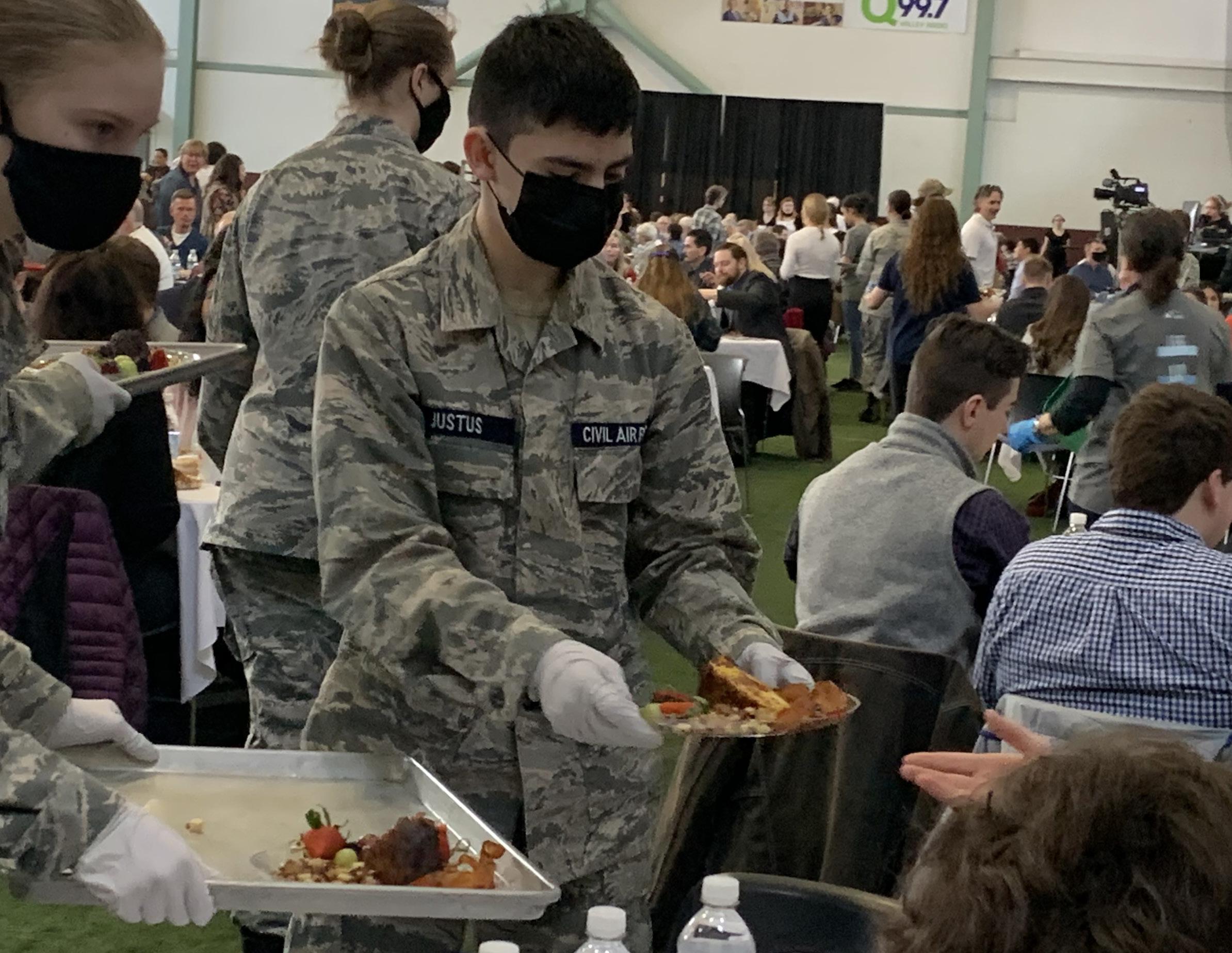
Arcturus seniors and cadets served food at the Governor’s Prayer breakfast on Saturday, March 27. SM Clinton Justus commented, “I received several comments from event attendees praising our cadets for their stellar performance. Our Cadets served the Governor’s table and over half of the 600 guests, then assisted the other volunteer groups with their part. This was all done in 18 minutes.” Cadets; C/SrA Danica Angaiak, C/MSgt Justin Goodman, C/TSgt Ryan Justus, C/MSgt Adrienne Martin, C/MSgt Andrew Martin, & C/SMSgt Elisabeth Olson, were directed, and assisted by senior members; Martin, Goodman, Clemans, E. Justus, & C. Justus.”
